The Portrait of Giovanni della Volta With His Wife and Children by the Venetian artist Lorenzo Lotto can reveal some aspects of his personality and the society that surrounded him. The portrait is key to understanding the artist’s qualities, and the family values, symbolism and customs of Venice in the 16th century.
The Portrait of Giovanni della Volta With His Wife and Children by the Venetian artist Lorenzo Lotto can reveal some aspects of his personality and the society that surrounded him. The portrait is key to understanding the artist’s qualities, and the family values, symbolism and customs of Venice in the 16th century.
During Lotto’s life, Venice was the thriving capital of an empire that played a dominant role in the eastern Mediterranean Sea. It was an international and cultural hub that attracted artists, scholars, publishers, along with diplomats and merchants. This was the atmosphere that Lotto absorbed in his formative years. In Venice, he became acquainted with the translucent glazes and the infinite potential of the oil painting technique, as well as the use of color which was a speciality of the Venetian school.
Despite his extraordinary talent, Lotto felt that there was no room for him in his hometown. He was considered a sort of a social misfit and ended up traveling constantly throughout Italy spending most of his life in marginal areas but periodically going back home.
During his career, Lotto focused mainly on altarpieces and portraits. In portraiture he contributed considerably to the development of the three-quarter-length portrait. The Portrait of Giovanni della Volta With His Wife and Children is an excellent example of his late production.
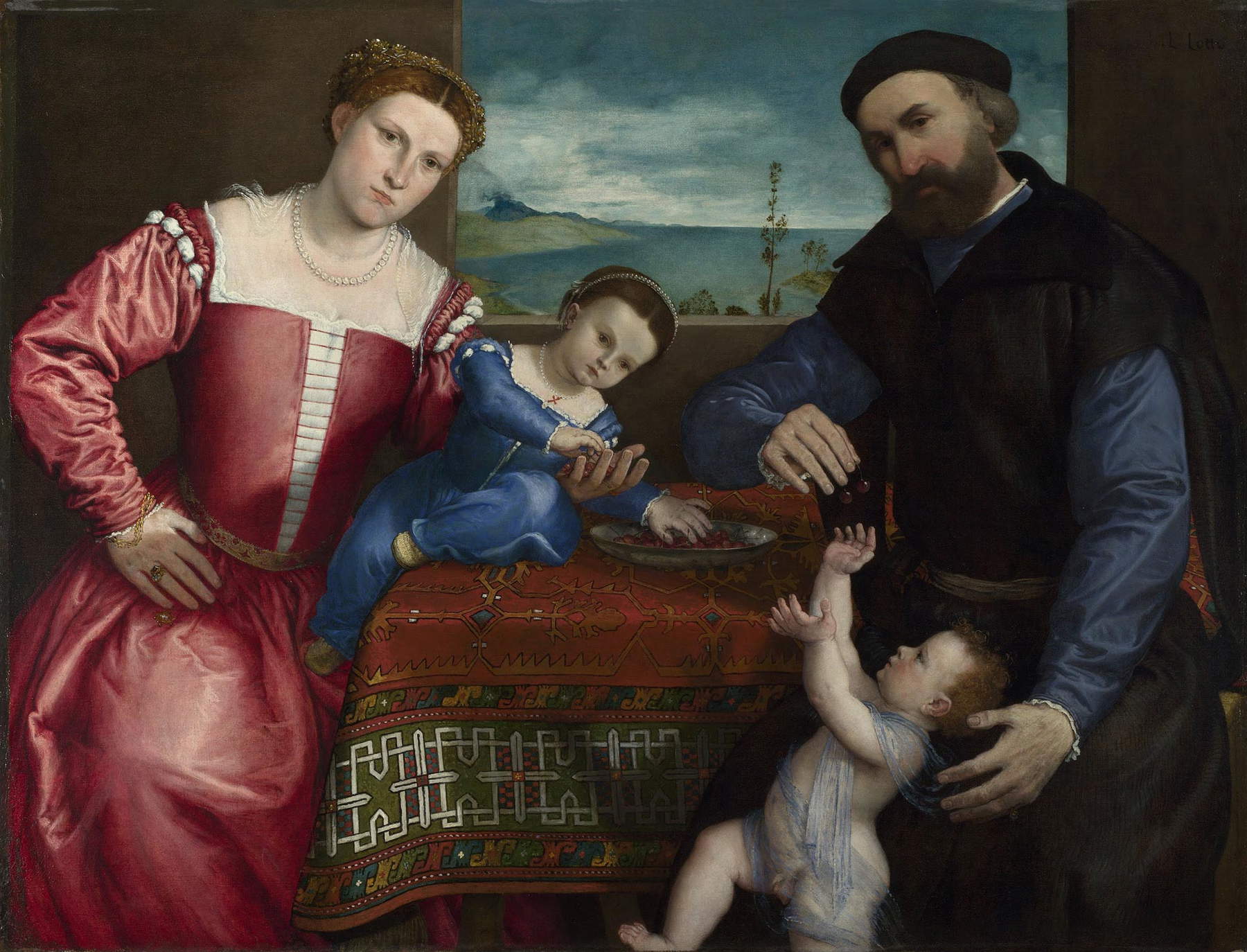
Lotto touched his highest peaks with portraiture. He was able to conquer the trust of wealthy merchants and learned to portray them in unusual poses, pairing them with unusual props. Movement, diagonals, specific objects, expressive gestures, and strong psychological elements, move his compositions far from the aulic portraiture in vogue at the time in Italy. During his last stay in Venice, he was the guest of a wealthy merchant, Giovanni della Volta, where he may have painted this portrait in lieu of rent.
In the painting, the della Volta family—composed of mother, father, and two children—is gathered around the table in a time that seems suspended. The composition displays a V shape whose extremities are the heads of the two adults and the dish on the table. However, our eyes are also drawn to follow the diagonal that goes from mother to naked toddler. Additionally the composition is slightly unbalanced, bringing more weight to the side of the two males. Each of the figures is moving but the scene seems frozen and the faces are unfathomable. They do not show the strong emotional character found in Lotto’s previous portraits. The artist doesn’t give his characters emotional involvement, he seems to somehow reflect his own mood of vague sadness, which permeated the last part of his life.
The mother is offering cherries to the daughter suggesting the handling of fertility (and maternity) while the father gives them to the toddler son. The veil in which the boy is partially wrapped shows his genitals as an indication of the continuation of the lineage. The parents confidently protect their offspring with their gestures, in a space made intimate by the presence of the warm toned rug displayed on the table. There is no room for other pieces of furniture or personal belongings. The space in the painting presents a dual contrasting nature. The inner space is portrayed as safe and familiar, while the external space can be perceived as ominous through the large and abstract opening in the bare wall. That aperture, situated just behind the soft carpet, allows the view of a cold coastal landscape (this is not the Venetian lagoon that could have been seen from their window), crowned by potentially threatening clouds.
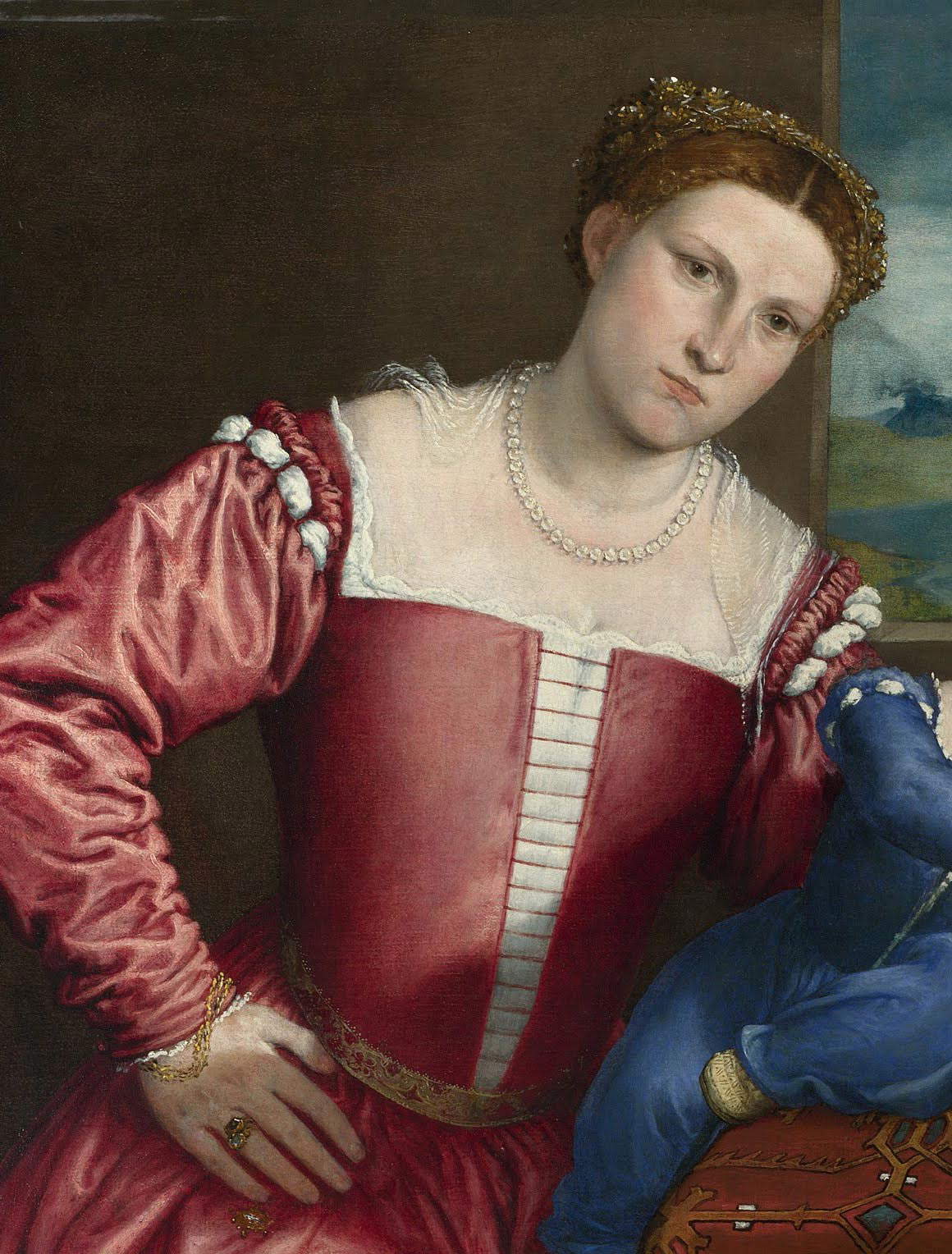
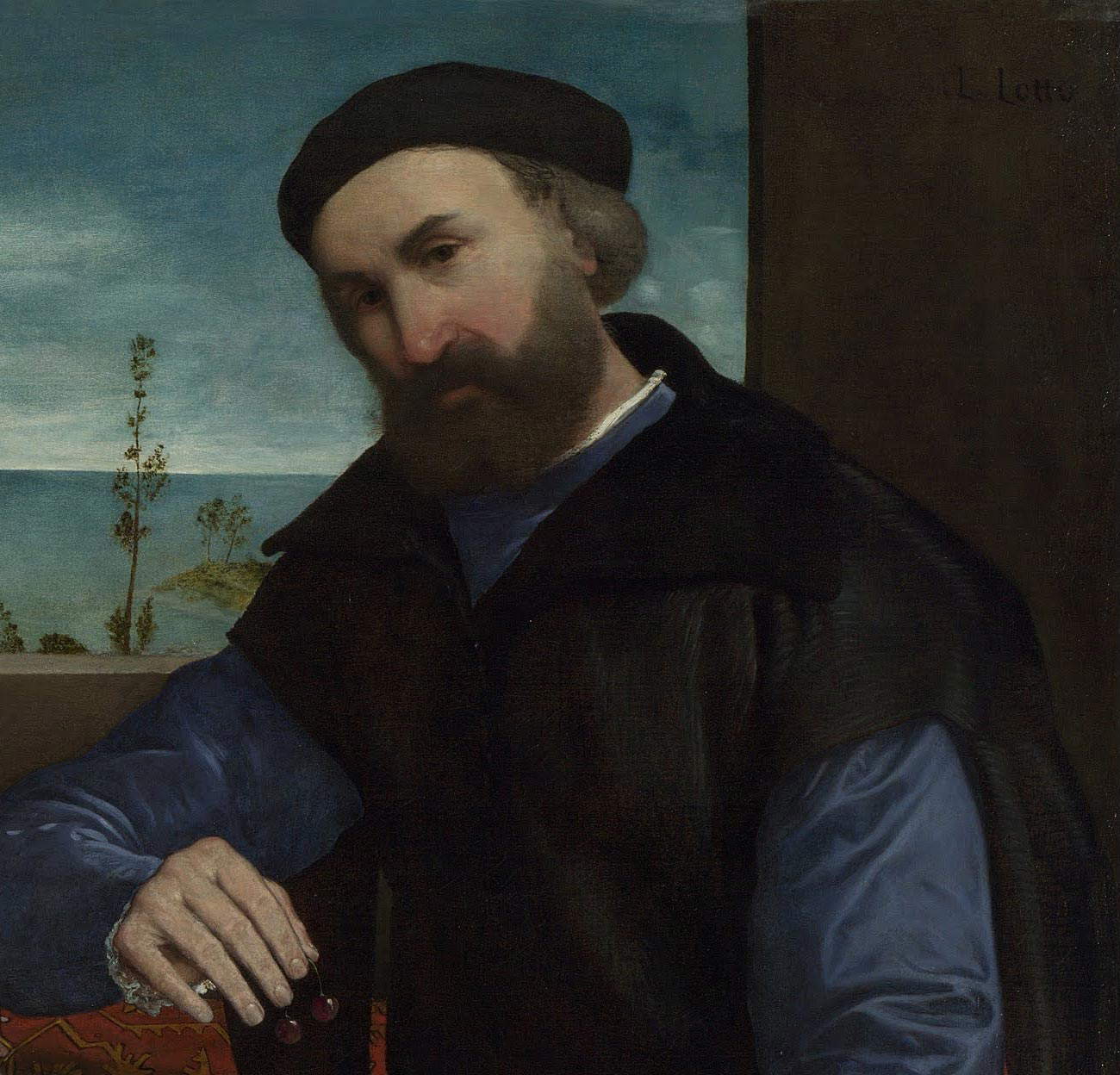
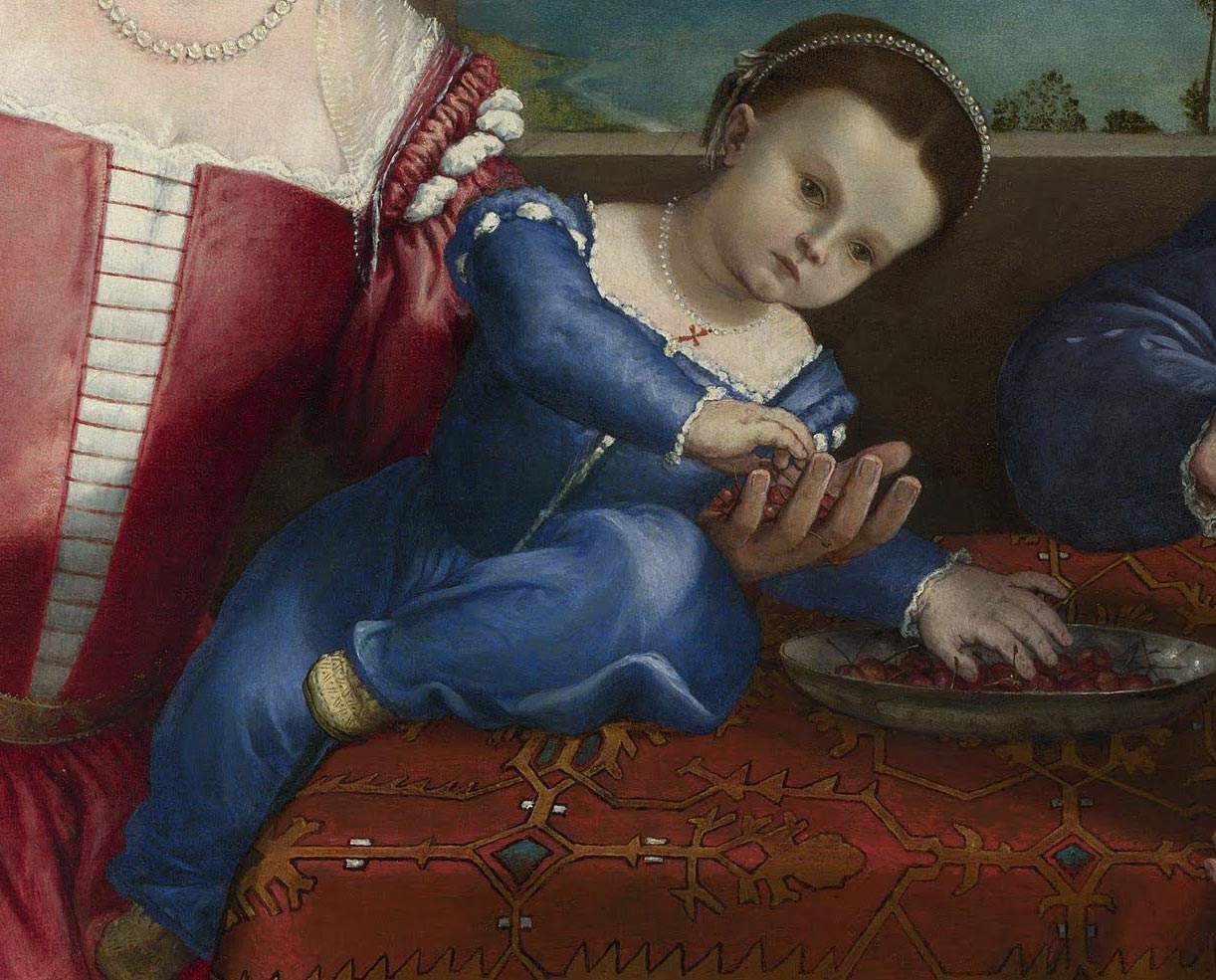

In this portrait, the mother and daughter wear an elegant gamurra with a square neckline and a fitted bodice, colored respectively cyclamen and cobalt. The sleeves are detachable, interchangeable, and dotted with puffs of white shirt at the joints. At the time childrenswear did not exist and young people wore uncomfortable miniature adult clothing. Mother and daughter both wear luminous strings of pearls. On the girl’s chest is a coral pendant, typically worn by children for its apotropaic power. The woman wears a little crown with embedded inserts, a bracelet, and a number of rings. The man, in dark colors, wears a zimarra—a fashionable and comfortable overcoat on top of a blue doublet—and a velvet hat.
Venice functioned as the connection between Europe and the Middle East. The intense trade between these two worlds resulted in the penetration of a different aesthetic, which developed new tastes and desires. Turkish carpets were among luxury goods that were in great demand during the 15th and 16th centuries. In Venice, precious Anatolian rugs were displayed hanging from the windows and balconies during high ceremonial public events and were considered supreme status symbols by the elite. These carpets were too precious to be put on the floor and they usually covered chests or desks as purely ornamental objects. Many are visible in Venetian paintings of the 15th and 16th centuries at the point that certain Anatolian rugs started to be called “Bellini rug”, “Crivelli rug” or “Lotto rug”. Lotto rugs are also called Ushak (from the Turkish city where they were manufactured) and they are often characterized by a yellow arabesque grid on a red surface bordered by a green and white stripe similar to the one in the portrait. In paintings, carpets were used to show the wealth of sitters and to denote inhabited space. They were also employed as compositional and coloristic elements as well as soft architecture, capable of demarcating space. We know that Lotto owned an Anatolian rug and possibly used it as a model in some of his works.
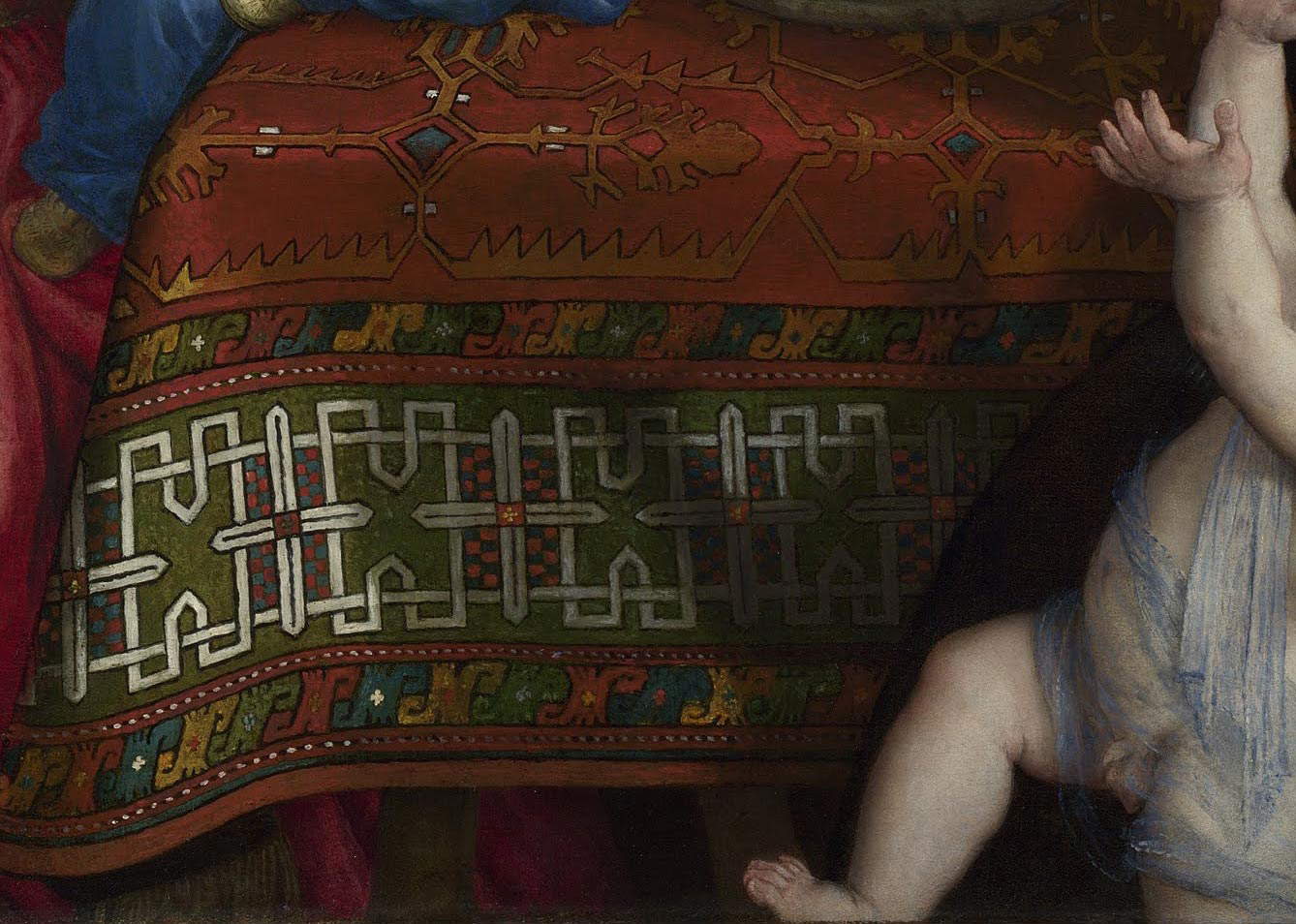

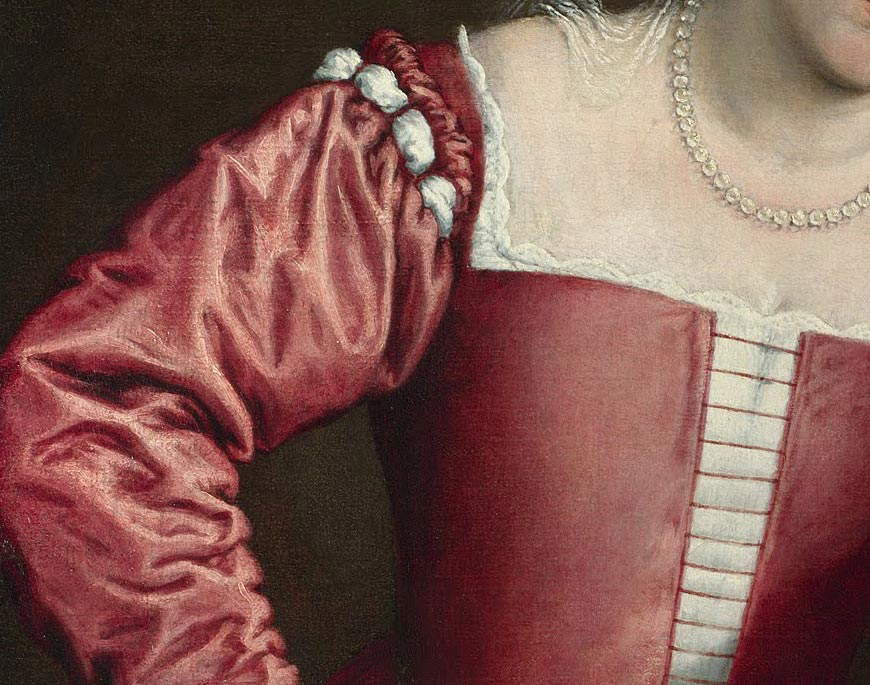
The thought of his death had been haunting Lotto for a while. In the will written a few months before the completion of the portraits and, havin g no heirs, he left his brushes, colors, and the few objects in his atelier to two deserving young painters. Those were the earthly belongings of one of the most talented artists of the 16th century.
Towards the end of his peripatetic life, tired and disappointed by the cold reception of his last stay in Venice, Lotto decided to retire in Loreto where he lived as an oblate member of a church for a few years until his death. It it comforting to read what Lotto’s contemporary, Giorgio Vasari, wrote about him in his famous Lives of the Most Eminent Painters, Sculptors, and Architects, “In these last years of his life he felt very happy and full of peace of mind, and what is more, he was able —or so it is believed— to conquer the riches of eternal life”.
Lotto’s extraordinary artistic skills put him alongside the geniuses of his time, such as Bellini, Giorgione, Titian, and Veronese, despite the fact that during his life he always remained out of the mainstream. He was a troubled soul whose sensibility and fine taste contributed to giving new life and depth to portraiture.
Warning: the translation into English of the original Italian article was created using automatic tools. We undertake to review all articles, but we do not guarantee the total absence of inaccuracies in the translation due to the program. You can find the original by clicking on the ITA button. If you find any mistake,please contact us.